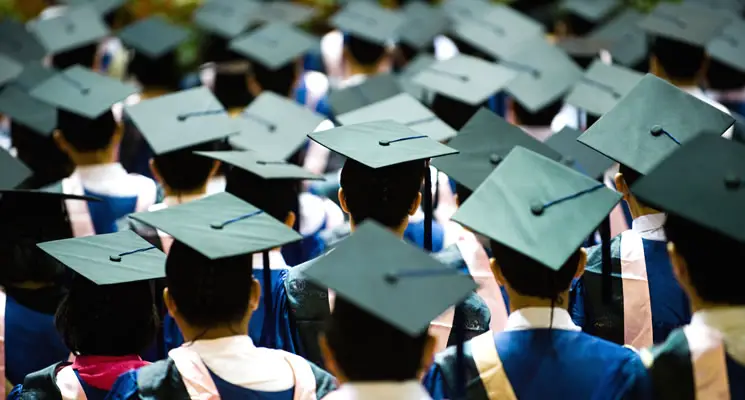Michael Bloomberg‘s record $1.8 billion donation for financial aid to Johns Hopkins University highlights the problem of student debt in America, which can still be a burden even years after graduation.
According to the Department of Education, 42.2 million Americans were repaying a federal student loan at the end of June 2018 for a total sum of nearly $1.5 trillion, the largest volume of debt after home loans.
Bloomberg, the former mayor of New York, said he was making the gift to his alma mater to help qualified low- and middle-income students more easily afford access to university in a country where post-secondary education fees at elite schools routinely exceed $50,000 a year, a prohibitive barrier for most families.
“I was lucky: My father was a bookkeeper who never made more than $6,000 a year. But I was able to afford Johns Hopkins University through a National Defense student loan and by holding down a job on campus,” Bloomberg, who also founded the financial news service of the same name, wrote in a New York Times op-ed.
The donation, believed to be the biggest ever to a university, “will ensure that we are able to recruit more first-generation and low-income students and provide them with full access to every dimension of the Johns Hopkins experience,” its head Ronald Daniels said.
Currently, 44 percent of students at the institution in Baltimore, Maryland, complete their studies in debt, on average owing more than $24,000, university data shows.
Americans are struggling to pay $1.5 trillion in student debt pic.twitter.com/WPYfegEbog
— Bloomberg Quicktake (@Quicktake) November 20, 2018
‘Drop in the Ocean’
For Sandy Baum, a university professor at the Urban Institute, Bloomberg’s gift is “great” but “that’s just a drop in the ocean.”
His move would have had a bigger impact if he gave money to improve the quality of education for more students, in less elite private or public institutions, she told AFP, adding that they sorely lack funding.
Baum is not opposed to student loans because for most students, the choice becomes one between not going to university or borrowing to go.
Most students’ loans, she says, amount to between $15,000 and $20,000 but getting $40,000 in debt is not unusual for a bachelor’s degree (four years of study).
The College Board estimates the average cost of a four-year course in a private university at $34,740, not counting additional accommodation and living expenses.
Many students take out loans from the federal government or private lenders.
Some, especially the less wealthy, fall into the spiral of over-indebtedness when they find themselves unable to repay their loans.
They no longer have access to credit, cannot rent a home or buy a car. A local cable channel this summer launched a game, “Paid Off,” in which the participants battle it out to see who has their student debt cleared.
Fed Worries
The problem worries everyone — even the U.S. central bank. “As student loans continue to grow and become larger and larger, then it absolutely could hold back growth,” Jerome Powell warned in March.
Joanna Darcus, a lawyer for the consumer protection organization NCLC, welcomed Bloomberg’s big donation.
It’s needed in our “completely broken system of financing university education by debt,” she said.
For students from low-income backgrounds “it is very important to lower the cost of education” as student debt increases the gap between rich and poor, she told AFP.
The NCLC advocates for an increase in the number and size of university scholarships.
“If its possible for people to go to school without incurring debt we are all better off; we don’t have to spend money on debt collection and student debt doesn’t impair the decision-making on a personal, professional or financial level,” she added.
Reporting by AFP
Utah Ranks No.1 as State With Lowest Student Debt Levels [Report]



